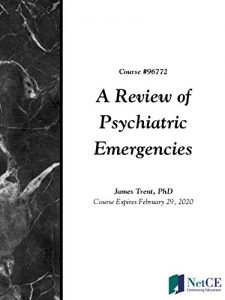The purpose of this course is to bridge the gap in knowledge of palliative care by providing an overview of the concept of palliative care and a discussion of the benefits and barriers to optimum palliative care at the end of life. In addition, members of the public may use this course to enhance their personal knowledge of the subject matter presented.
Upon completion of this course, you should be able to:
1. Describe how the definition of palliative care has evolved.
2. Define the structure of palliative care delivery, including models of care and the interdisciplinary healthcare team.
3. List the benefits of palliative care at the end of life.
4. Describe the barriers to optimum delivery of palliative care through hospice.
5. Describe the components of communication and decision making for end-of-life care.
6. Identify the most common symptoms at the end of life for patients with life-limiting diseases.
7. Discuss the barriers to effective relief of pain at the end of life.
8. Assess pain accurately through use of clinical tools and other strategies.
9. Select appropriate pharmacologic and/or nonpharmacologic therapies to manage pain in patients during the end-of-life period.
10. Assess and manage the most common symptoms (other than pain) experienced by patients during the end-of-life period.
11. Evaluate the psychosocial needs of patients at the end of life and of their families and provide appropriate treatment or referral.
12. Address the spiritual needs of patients at the end of life and provide appropriate treatment or referral.
13. Describe the components of care for patients and their families over the last days and hours of life.
14. Recognize appropriate grief and mourning.
15. Explain the specific challenges in delivering optimum palliative care to older patients, children, and patients in critical care settings.
This 15-hour continuing education course is available for download for professional development; if continuing education credit is desired, please see instructions included in eBook.
Upon completion of this course, you should be able to:
1. Describe how the definition of palliative care has evolved.
2. Define the structure of palliative care delivery, including models of care and the interdisciplinary healthcare team.
3. List the benefits of palliative care at the end of life.
4. Describe the barriers to optimum delivery of palliative care through hospice.
5. Describe the components of communication and decision making for end-of-life care.
6. Identify the most common symptoms at the end of life for patients with life-limiting diseases.
7. Discuss the barriers to effective relief of pain at the end of life.
8. Assess pain accurately through use of clinical tools and other strategies.
9. Select appropriate pharmacologic and/or nonpharmacologic therapies to manage pain in patients during the end-of-life period.
10. Assess and manage the most common symptoms (other than pain) experienced by patients during the end-of-life period.
11. Evaluate the psychosocial needs of patients at the end of life and of their families and provide appropriate treatment or referral.
12. Address the spiritual needs of patients at the end of life and provide appropriate treatment or referral.
13. Describe the components of care for patients and their families over the last days and hours of life.
14. Recognize appropriate grief and mourning.
15. Explain the specific challenges in delivering optimum palliative care to older patients, children, and patients in critical care settings.
This 15-hour continuing education course is available for download for professional development; if continuing education credit is desired, please see instructions included in eBook.












